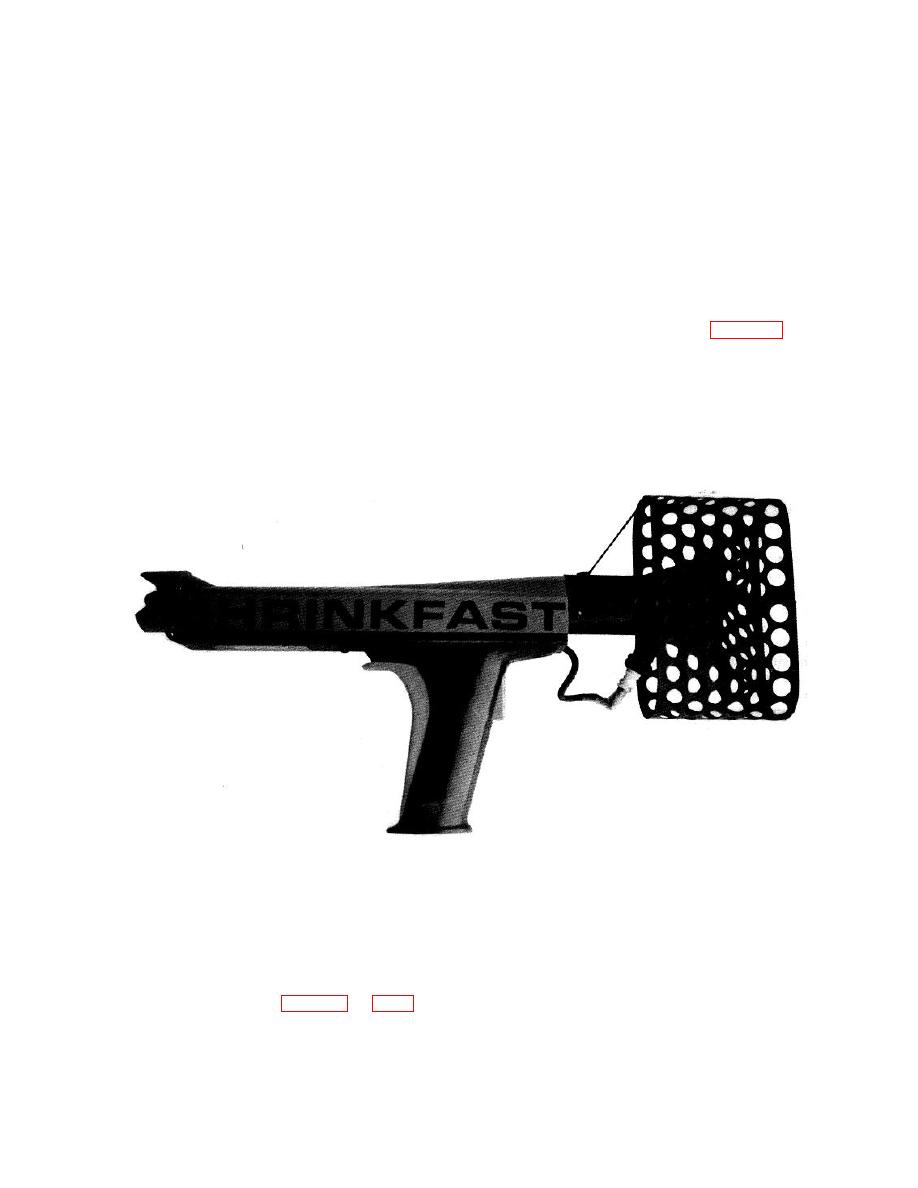 |
|||
|
|
|||
|
Page Title:
Unitizing Loads by Shrink Wrapping. |
|
||
| ||||||||||
|
|
 TM 38-400/NAVSUP PUB 572/AFMAN 23-210 MCO 4450.14/DLAM 4145.12
b. Types of shrink equipment. The major types
(1) The detailed requirements concerning unit
load cube dimensions and weight are contained in MIL-
currently available are--
STD-147.
(1) Shrink chamber. This is a heat chamber
(2) Palletized unit loads made up for storage
or oven (heat source can be gas or electricity) having a
and not for shipment may exceed the height and weight
single door for entrance and exit and a conveyor or
limitations specified for unit loads designed specifically
movable platform to transport the load. The operating
for shipment. Deviations will be limited to the following:
temperature is automatically controlled and the time the
load is subjected to the heat is either automatically or
(a) Capacity of MHE.
manually controlled. Length of load time in the chamber
(b) Stacking height of the unit.
depends on film thickness and film type. Approximate
(c) Unusual shape or size of items.
capacity is 30 pallets per hour.
(d) Storage capacity of the building or
(2) A hand-held gas-fired gun is used for
storage area.
remote shrink-film operations (fig 3-59).
This is
designed to shrink wrap 'small cartons to full pallet
3-90. Unitizing Loads by Shrink Wrapping.
loads. It uses natural or propane gas fuel; electricity is
a. Definition. Shrink wrapping A technique of
not required. All shrink films can be used with this item.
packaging in which the strains of a plastic film are
released by raising the temperature of the film, thus,
causing it to shrink over the package.
Figure 3-59. Hand-held, gas-fired gun for remote shrink operations.
thickness, construction, and sizes. Some of the shrink
c. Types of shrink film available.
films available are listed below:
(1) A variety of shrink films is available and
(a) Polyethylene.
the user must assess his particular requirements to
determine the density and type of film to be used.
(b) Polyvinylchloride.
There are two general categories of film, sheets (figs 3-
(c) Polystyrene.
60 and 3-61) and preformed bags (figs 3-62 and 3-63).
(d) Polypropylene.
(2) The preformed bags are more widely
(e) Polyester.
used, each type being available in a wide range of
(f) Polyvinylidene chloride.
3-88
|
|
Privacy Statement - Press Release - Copyright Information. - Contact Us |